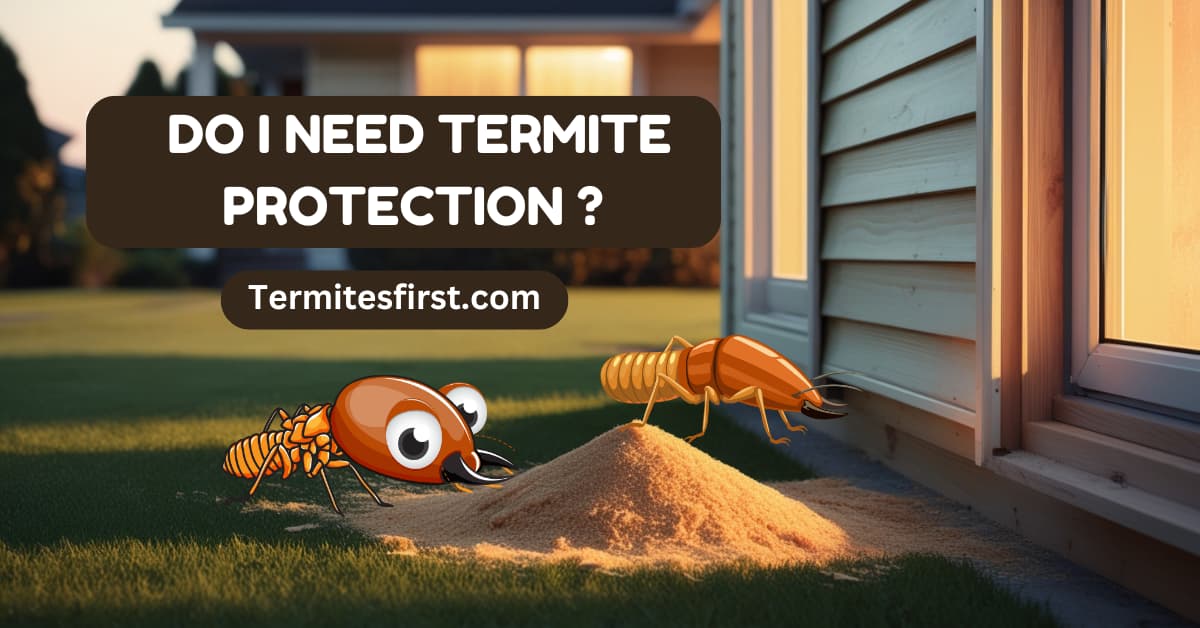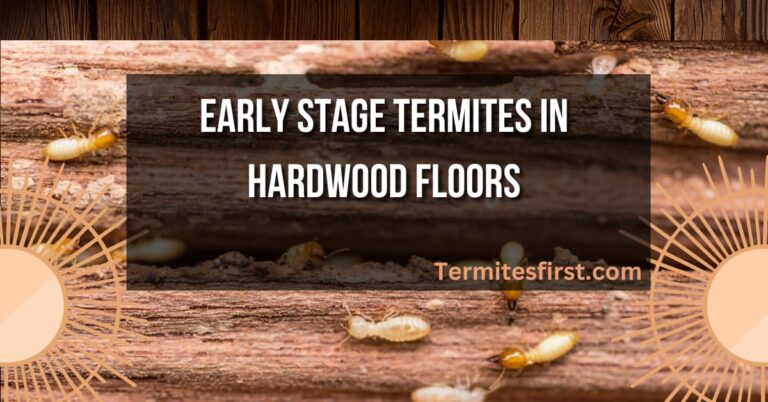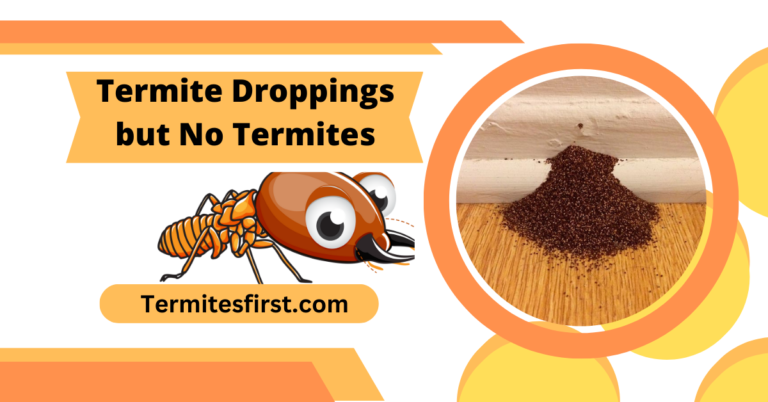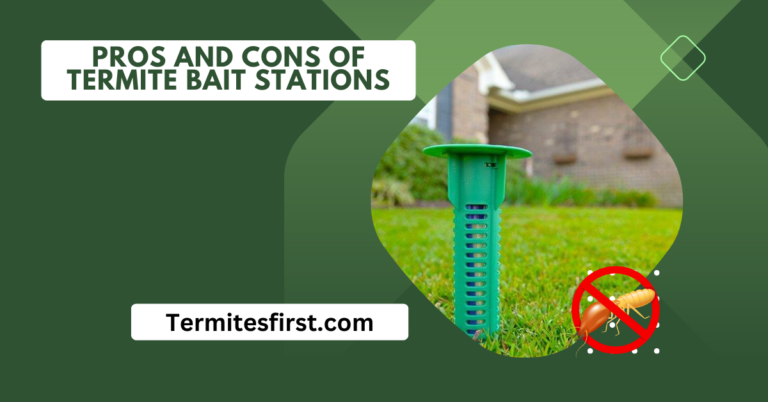Do I need Termite Protection For My Concrete Slab Home?
Did you know that active infestations of termites cause over $5 billion in property damage each year in the U.S.? I often wonder, do I need termite protection? It’s a question many homeowners face. Termites can silently munch away at my home’s structure, leading to costly repairs from active infestations.
Understanding the risks is vital. I’ve learned that prevention is key. Regular inspections and treatments by a professional termite control expert can save me from termite problems and headache down the line, including termite repairs and termite pretreatment. It’s not just about protecting my house; it’s about safeguarding my investment and peace of mind with a termite warranty, a professional termite control expert, and different termite treatments for subterranean termites. In this post, I’ll explore why termite protection is essential and how it can benefit me as a homeowner. Let’s dive into the details together.
Key Points
- Termite risks vary by region, especially in areas like Virginia where certain conditions make homes more susceptible. Knowing your local risks, including termite problems, can help you decide on the need for protection from a professional termite control expert and different termite treatments.
- Evaluate your home structure type; wooden homes are at higher risk for termite damage compared to those with concrete slabs. This understanding can influence your protection strategy.
- Prevention is key. Regular inspections and maintenance can save you from costly repairs later, so consider scheduling annual check-ups with a pest control professional for different termite treatments.
- Investing in termite protection offers peace of mind and can increase your home’s value. Think of it as a safeguard against potential damage from different termite treatments that could affect your property’s worth, especially with the help of a professional termite control expert.
- Be vigilant for signs of termite activity, such as mud tubes or hollow-sounding wood. Recognizing these early indicators can lead to different termite treatments, timely treatment, and minimize damage with a professional termite control expert.
- Weigh the cost of protection against potential repair expenses. Investing in termite prevention now can be more economical than dealing with extensive damage later.
Understanding Termite Risks
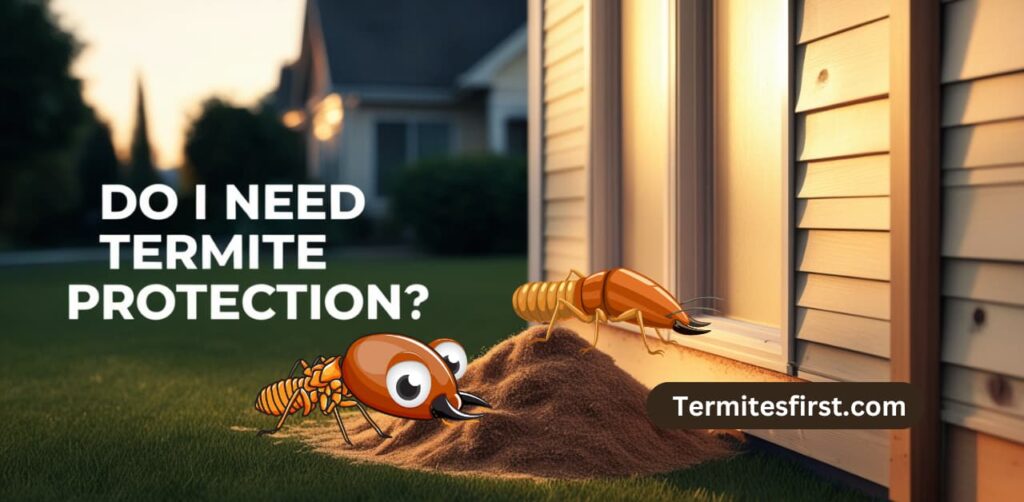
Hidden Damage
Termites cause hidden damage that often goes unnoticed. They can eat away at wood structures for months or even years before anyone realizes there is a problem, highlighting the need for termite treatments. This hidden nature makes it crucial to have regular inspections and termite treatments. I remember when I found out about termites in my neighbor’s house. They had no idea until the damage from termite treatments was severe and costly.
Termite damage can compromise the integrity of a home. By the time you notice signs, like mud tubes or discarded wings, significant harm may already be done, making termite treatments necessary. Ignoring these signs can lead to extensive repairs, termite treatments, and safety hazards.
Financial Implications
The financial implications of termite infestations are serious. Repairing termite damage can cost thousands of dollars. Homeowners may also face a decrease in property value due to these issues, including termite treatments. I once read about a family who lost a large sum on their home because they didn’t address termite problems early enough.
Insurance may not cover all termite-related damages. Many policies exclude termite damage, leaving homeowners responsible for repairs. This exclusion highlights the importance of proactive termite protection.
Importance of Inspections
Timely inspections are essential for catching any signs of termite activity early. Regular checks can identify potential infestations before they escalate. A professional pest control service can help detect undiscovered termites that might be lurking in your walls.
I learned that some signs of termite activity include small holes in wood and frass, which looks like sawdust. Knowing what to look for, such as termite treatment, can save homeowners from future headaches and expenses.
Prevention Strategies
Preventive measures are key to avoiding termite issues. Homeowners should consider treatments like bait systems or liquid barriers around their properties. These methods create a protective barrier against termites.
Maintaining proper drainage, reducing moisture around the foundation, and termite treatment is vital. Termites thrive in damp environments, so keeping your home dry helps deter them.
Termite Insurance and Warranties
Many companies offer termite insurance and warranties for added peace of mind. These plans often cover inspections and treatments, ensuring that homeowners stay protected against infestations. It’s wise to research different termite treatments and select one that fits your needs.
A good warranty can cover repairs if termites return after treatment. This coverage provides an extra layer of security for homeowners worried about future invasions and termite treatment.
Evaluating Home Structure Types
Wood-Frame Homes
Wood-frame homes are common in many areas. These structures are particularly vulnerable to termite damage. Termites thrive on cellulose, which is found in wood. A homeowner with a wooden house should take special care to monitor for signs of infestation.
I once lived in a wood-frame home. I remember the worry when I noticed tiny holes in the walls. It turned out to be a small infestation. Regular inspections helped prevent serious damage.
Concrete Homes
Concrete homes offer better protection against termites. These materials do not provide food for termites, making them less appealing. However, concrete can still have vulnerabilities. For example, wooden structures like decks or fences attached to concrete can attract termites.
Homeowners should check these areas regularly. Keeping wood away from the foundation can reduce risks. I always advise my friends with concrete homes to inspect their attachments carefully.
Construction Materials
Understanding the construction materials of your home is crucial. Homes built with treated wood resist termites better than untreated wood. Metal and stone are also less likely to be affected by these pests.
I learned that some builders use termite-resistant materials during construction. This can significantly lower the risk of an infestation over time. Homeowners should ask about these materials before buying a new home.
Age of the Home
The age of your home plays a role in termite risk levels. Older homes often have untreated wood, which attracts termites. They may also have gaps or cracks that allow easy access for pests.
If your home has not been treated for termites in years, consider getting an inspection. I’ve seen how older homes can suffer from hidden damage due to termites. Regular treatments can save homeowners from costly repairs later on.
Previous Treatment History
Knowing the treatment history of your home is essential. If previous owners had regular inspections and treatments, your risk decreases significantly. On the other hand, if treatments were infrequent, you may need to act quickly.
I always check a home’s history before moving in. It gives me peace of mind knowing what to expect regarding termite protection. Homeowners should keep records of any treatments done as well.
Importance of Prevention
Proactive Measures
Taking proactive measures is crucial to prevent termite infestations. Termites can cause significant damage to homes. They often go unnoticed until the damage is severe. I learned this the hard way when I discovered wood damage in my basement. It was costly and stressful.
Homeowners should consider prevention as a priority. Regular treatments can create a barrier against these pests. This includes using chemical treatments or physical barriers during construction. These steps help reduce the risk of an infestation.
Regular Inspections
Regular inspections play a vital role in maintaining a termite-free environment. Experts recommend conducting inspections at least once a year. This helps catch any signs of termites early on. During an inspection, professionals look for mud tubes, damaged wood, and other indicators of termites.
I remember scheduling my first inspection after moving into my home. The inspector found some minor issues that could have turned serious if left unchecked. Early detection saved me time and money.
Tailored Prevention Plans
Establishing a termite prevention plan is essential for your specific home and location. Each house has unique features that may attract termites. Factors like soil type, moisture levels, and nearby vegetation can influence termite activity.
A tailored plan might include various strategies:
- Moisture control: Fix leaks and ensure proper drainage around the home.
- Wood treatment: Use treated wood for construction or renovations.
- Landscaping adjustments: Keep mulch away from the foundation and trim plants.
These steps create an effective defense against termites.
I also found it helpful to consult with pest control experts for advice on my situation. They provided insights specific to my area, which improved my prevention efforts.
Benefits of Investing in Protection
Cost Savings
Investing in termite protection can save homeowners from extensive repair costs. Termites can cause severe damage if left unchecked. Repairing structural damage can cost thousands of dollars. I once heard a neighbor spent over $10,000 to fix his home after a termite infestation. Regular inspections and treatments can prevent such costly repairs.
Many homeowners overlook the potential expenses related to termite damage. They might think it won’t happen to them. However, the reality is that termites affect homes across the country. A proactive approach can significantly reduce long-term costs.
Peace of Mind
Knowing your home is safeguarded against potential termite damage brings peace of mind. Homeownership comes with many responsibilities. Worrying about pests should not be one of them. With proper protection, I feel secure in my investment.
Termite protection allows homeowners to focus on other important aspects of maintaining their property. They can enjoy their space without the constant fear of hidden damage. This sense of security enhances overall well-being and satisfaction.
Enhanced Property Value
Effective termite protection can enhance property value and marketability. Homes with a history of termite issues may struggle to sell. Buyers often seek homes that show signs of good maintenance and care. A property protected from termites signals to potential buyers that it is a wise investment.
I’ve noticed that homes with documented pest control measures attract more interest during open houses. This trend reflects growing awareness among buyers about pest-related issues. Investing in termite protection not only safeguards your home but also makes it more appealing in the real estate market.
Long-Term Investment
Termite protection is a long-term investment in your home’s future. Regular treatments keep your property safe from infestations. Many pest control companies offer plans that include routine inspections and preventive measures.
These services ensure early detection of any problems before they escalate. Homeowners who invest in these plans often find they are worth every penny spent.
Concrete Slabs and Termite Threats
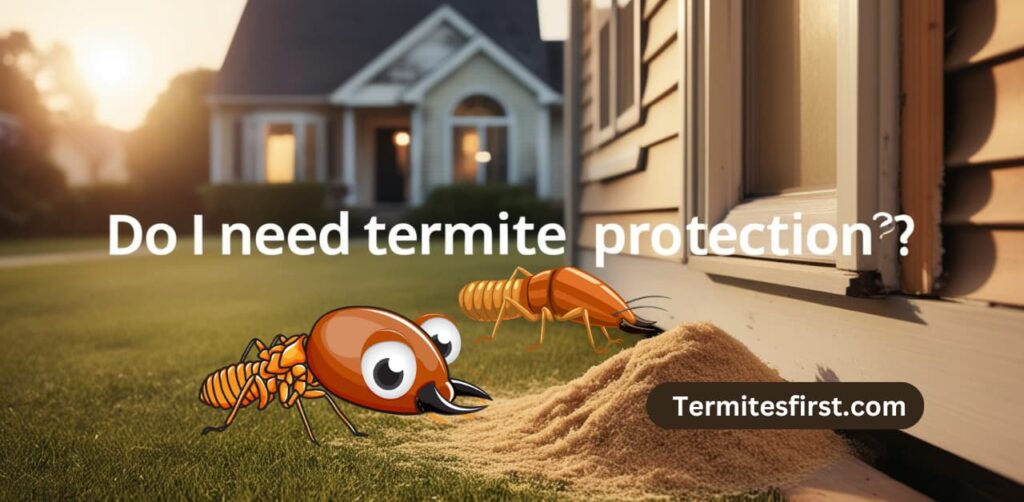
Termite Access
Concrete slab foundations can create unique risks for termite access. These structures are often in direct contact with the soil. This setup allows damp wood termites and other pests to easily reach the wooden parts of a home. I learned that termites thrive in moist conditions. They can enter through cracks or gaps in the concrete, leading to active infestations.
Termites can also find their way through plumbing penetrations or utility lines. Even small openings can become entry points. Once inside, they can cause extensive damage before homeowners even notice.
Drainage Importance
Proper drainage is critical for homes with concrete slabs. Poor drainage can lead to water pooling near the foundation. This creates an ideal environment for termites. I’ve seen how improper landscaping can attract pests. Keeping gutters clean and directing water away from the house helps reduce moisture.
Landscaping choices matter too. Using mulch close to the foundation can hold moisture, attracting pesky pests. Instead, consider rock or gravel as ground cover around your home. This change reduces moisture levels and makes it less appealing for termites.
Preventative Measures
Preventing termite activity in homes with concrete slabs is essential. Regular inspections by a pest control company can catch problems early. I recommend scheduling these inspections at least once a year.
Homeowners should also consider applying chemical barriers around the foundation. These barriers deter termites from entering the property. Sealing any cracks in the concrete is vital. This simple step can block potential entry points.
Another effective measure includes keeping wood stored away from the house. Firewood, lumber, and other materials should be elevated and away from the foundation. This prevents damp wood termites from using them as a bridge into your home.
Lastly, ensuring proper ventilation in crawl spaces is crucial. Good airflow keeps these areas dry and inhospitable to termites.
Regional Risks in Virginia
Termite Species
Termites are a significant concern in Virginia. The two main species found here are the Eastern Subterranean termite and the Formosan termite. These pests thrive in warm, humid climates. They can cause serious damage to homes and structures.
I have seen firsthand how termites can devastate a house. One friend had to pay thousands for repairs after ignoring early signs of infestation. This experience highlights the importance of understanding local termite risks.
Environmental Factors
Virginia’s environment contributes to higher termite risks. The state has high humidity levels, especially during summer months. Moisture attracts termites as they seek damp wood for food.
l conditions also play a role. Many areas in Virginia have clay soil, which retains moisture. Termites find this ideal for nesting and feeding. Homeowners should be aware that these factors increase their vulnerability.
Vigilance and Inspections
Homeowners in Virginia must remain vigilant about termite inspections. Regular checks can help catch infestations early. I recommend scheduling inspections at least once a year.
Ignoring potential signs of termites can lead to costly repairs. Signs include mud tubes on walls, hollow-sounding wood, or discarded wings. If you notice any of these, act quickly.
In summary, understanding the prevalence of termite species and environmental factors is crucial for homeowners in Virginia. Being proactive with inspections can save you money and protect your home from damage.
Signs You Need Treatment
Mud Tubes
Mud tubes are a clear sign of termite activity. These tubes serve as protective highways for termites. They connect their underground nests to the wood above ground. I remember seeing these tubes on my neighbor’s house. They looked like small, muddy straws running up the foundation. Noticing them early can save you a lot of trouble.
Discarded Wings
Another indicator is discarded wings. Termites shed their wings after they swarm and find a new nesting site. You might find these tiny wings near windowsills or doors. I once found some while cleaning my garage. It was alarming to realize what they meant. Seeing these wings means you should take action quickly.
Hollow-Sounding Wood
Hollow-sounding wood is another sign that termites may be present. If you knock on wooden structures and hear a hollow sound, it’s a red flag. Termites eat away at the wood from the inside out, leaving the outer layer intact. I had an experience with this in my own home when I noticed a strange noise in the walls. It turned out to be an early warning sign of an infestation.
Importance of Quick Action
Acting quickly upon noticing any signs is crucial. Termites can cause significant damage in a short amount of time. The longer you wait, the worse the damage can become. Homeowners often underestimate how fast termites can spread. I learned this the hard way when I delayed calling for help after spotting mud tubes.
Consulting Professionals
Consulting with pest control professionals is highly recommended if you see any signs of infestation. Experts can assess the situation accurately and provide effective treatment options. They have the tools and knowledge to deal with termites safely and efficiently. I felt more secure after hiring professionals when I discovered signs of termites in my home.
Preventative Measures
Taking preventative measures is equally important. Regular inspections can help catch problems before they escalate. Keeping your property clean and dry also reduces risks. Remove any wood debris from around your home and fix leaks promptly.
Cost vs. Value of Protection
Upfront Costs
Termite protection services often require an upfront investment. Homeowners can expect to pay between $300 and $1,500 for initial treatments. This cost varies based on the size of the home and the extent of the infestation.
In contrast, repairing termite damage can be much more expensive. The average cost for repairs can range from $2,000 to $8,000 or more, depending on the severity of the damage. I remember a friend who faced this situation. They spent thousands fixing their home after ignoring early signs of termites.
Long-Term Financial Benefits
Investing in preventative measures offers significant long-term financial benefits. Regular treatments can prevent infestations before they start. This proactive approach saves money over time compared to reactive treatments after damage has occurred.
For instance, a yearly treatment plan may cost around $500. Over ten years, that totals $5,000. If untreated, potential repair costs could easily reach $20,000 or more due to severe damage. I believe it’s better to spend a little each year than face huge repair bills later.
Peace of Mind
The value of peace of mind is another crucial factor. Knowing your home is protected from termites reduces stress and worry. Many homeowners prioritize security and comfort in their living spaces.
A small investment in termite protection provides assurance against potential threats. The feeling of safety in your own home cannot be measured in dollars alone. I feel much more secure knowing my house is treated regularly.
Home Security
Home security extends beyond just locks and alarms. Termite protection plays a vital role in safeguarding your property’s structure and value. When termites invade, they compromise the integrity of the building.
Investing in termite protection enhances your home’s overall security. It prevents potential loss in property value caused by infestations. Homes with a history of termite issues can sell for less than those without such problems.
Conclusion:
Termite protection is crucial for safeguarding my home. I’ve learned that understanding the risks and signs of termite infestations can save me from costly damage. Investing in preventive measures not only protects my property but also adds value in the long run.
I encourage you to assess your situation and consider termite protection seriously. Don’t wait until it’s too late—take action now to secure your home from these destructive pests. Remember, a proactive approach today leads to peace of mind tomorrow.
Frequently Asked Questions
Yes, termite protection is crucial. Termites can cause significant damage to your home’s structure, leading to costly repairs. Prevention is often more affordable than treatment.
Signs of termite risk include mud tubes, hollow-sounding wood, and discarded wings. Regular inspections can help identify these risks early.
Wood-framed homes are particularly at risk. However, homes with wooden decks or landscaping near the foundation can also attract termites.
Yes, certain areas in Virginia have higher termite activity due to climate and soil conditions. Coastal and warmer regions often see increased infestations.
It’s recommended to have a professional inspection at least once a year. Regular checks help catch potential infestations before they escalate.
Costs vary based on your home’s size and location. However, investing in prevention is generally less expensive than repairing damage caused by termites.
While DIY treatments exist, they may not be effective. Professional pest control services provide comprehensive solutions and guarantee results for peace of mind.

